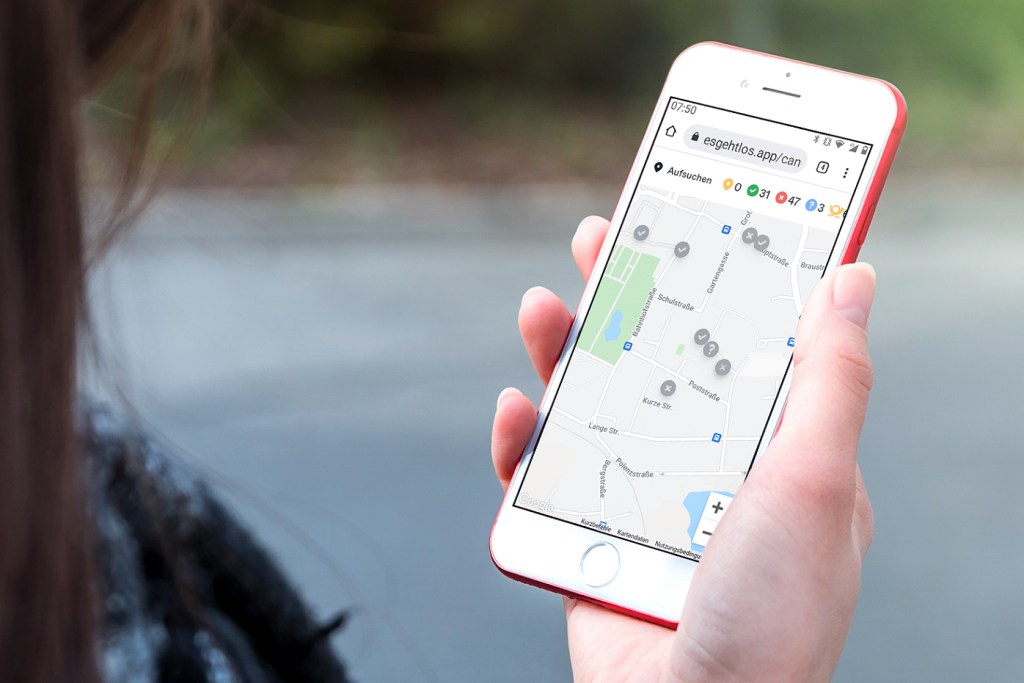How the app works – Outreach and participant management
When random selection is done manually, it involves keeping track of hundreds of invitations and responses. Organisers then need to locate and visit the non-responsive citizens at their homes and coordinate that task. The app performs several of these steps by itself.
The app works off data that the project team would have previously transferred from the municipal records of the community in question. From this data, the app randomly selects people to be invited to the citizens’ assembly. It then helps with personalised invitation letters by generating individual response links. The letters include unique QR codes that citizens can scan to accept or decline their invitations to the citizens’ assembly. If invitees do not have a phone capable of reading QR codes, they can also respond via mail, telephone or WhatsApp.
The app tracks responders and generates an overview of those who have not responded on a map. The project team can use this map to visit the non-responders at home and discuss the possibilities of their attendance. The visiting project member can use the app to update the person’s response in real time. “The app simplifies very complex processes that are usually prone to mistakes. It saves resources and has an element of gamification with the real-time map. So it is also fun to work with”, says Juliane Baruck.
The app is more secure than using Excel spreadsheets or something similar. In the development process, a specialised IT Team dedicated themselves to developing and performing security attacks on the app. When project members visit citizens at their homes, the app will use Google Maps to find the best route to their homes without giving any data to Maps or other third-party providers. “Of course, nothing is ever 100% safe, but we paid extremely close attention to security while we developed the app”, Juliane explains.
International interest in citizens’ assemblies and the app
Es Geht LOS has also provided training on this app for various municipalities. For example, the German city Brandis used the app for its random outreach process. The goal behind the app has always been to make it available everywhere for municipalities and other actors aiming to reach randomly selected people. “It is open source, and we want everybody to be able to use it, even if they don’t know that much about the random outreach process.”, Juliane explains.
The Es Geht LOS Team has noticed a trend towards the outreach method in Europe, especially on a communal level. They are excited about this development: “It’s important to rethink what representativeness means, and this is especially important in the legitimation of citizen assemblies”, Juliane argues. The purpose of using this method has always been to reach those who would not respond to other selection methods – those who are not politically engaged or active.
Next steps
The app itself has garnered attention outside of Germany as well. “We are in contact with several people who want to use the app, for example, in Amsterdam or Maastricht. The outreach method is becoming so popular, and the simplification the app provides is very useful,” says Juliane. Es Geht LOS is also working on an English translation to make the technology available internationally.
Lately, the team has been working on scaling the app so that more communities can use it. For this purpose, they are developing training to allow municipalities to independently conduct citizen assemblies with a random outreach method. At the same time, the app developers need to iron out some technical aspects. Currently, the app can only host one random outreach selection process at a time. To make scaling the app possible, Es Geht LOS is collecting funds to organise another round of development. In the meantime, they are still using the app for their citizen assembly project, Hallo Bundestag, which organises assemblies in every election district in Germany.
